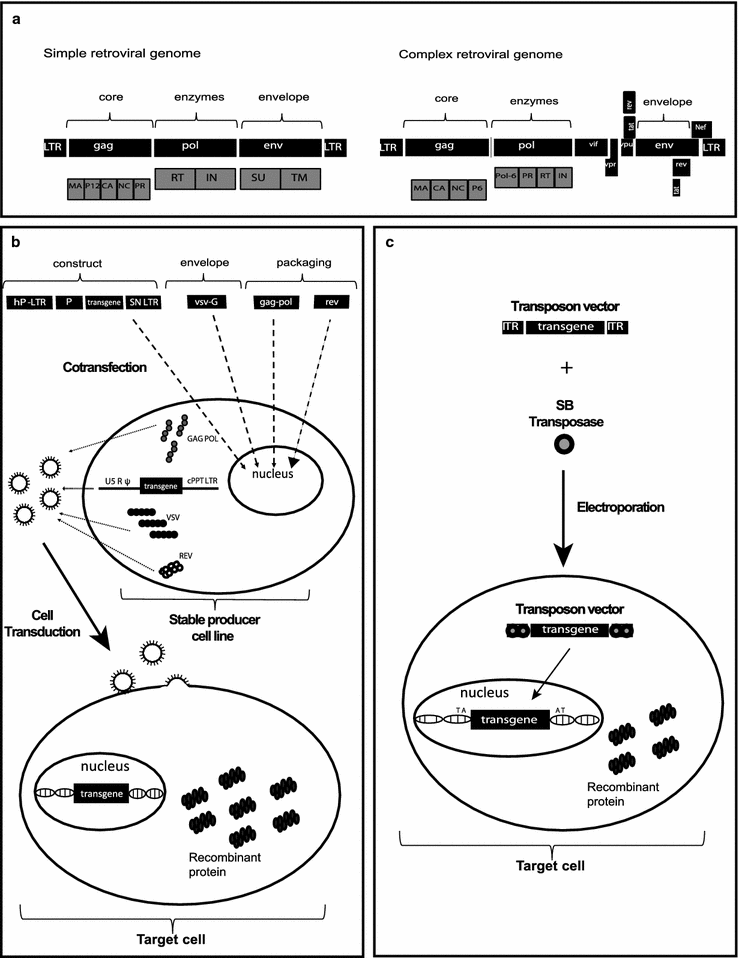Retroviral vectors and transposons for stable gene therapy: advances, current challenges and perspectives
- PMID: 27729044
- PMCID: PMC5059932
- DOI: 10.1186/s12967-016-1047-x
Retroviral vectors and transposons for stable gene therapy: advances, current challenges and perspectives
Abstract
Gene therapy protocols require robust and long-term gene expression. For two decades, retrovirus family vectors have offered several attractive properties as stable gene-delivery vehicles. These vectors represent a technology with widespread use in basic biology and translational studies that require persistent gene expression for treatment of several monogenic diseases. Immunogenicity and insertional mutagenesis represent the main obstacles to a wider clinical use of these vectors. Efficient and safe non-viral vectors are emerging as a promising alternative and facilitate clinical gene therapy studies. Here, we present an updated review for beginners and expert readers on retro and lentiviruses and the latest generation of transposon vectors (sleeping beauty and piggyBac) used in stable gene transfer and gene therapy clinical trials. We discuss the potential advantages and disadvantages of these systems such as cellular responses (immunogenicity or genome modification of the target cell) following exogenous DNA integration. Additionally, we discuss potential implications of these genome modification tools in gene therapy and other basic and applied science contexts.
Keywords: Clinical trials; Gene therapy; Lentivectors; Transposons.
Figures

References
-
- Yawo H, Kandori H, Koizumi A. Optogenetics: light-sensing proteins and their applications. Japan: Springer. 2015.
Publication types
MeSH terms
Substances
LinkOut - more resources
Full Text Sources
Other Literature Sources
Medical

